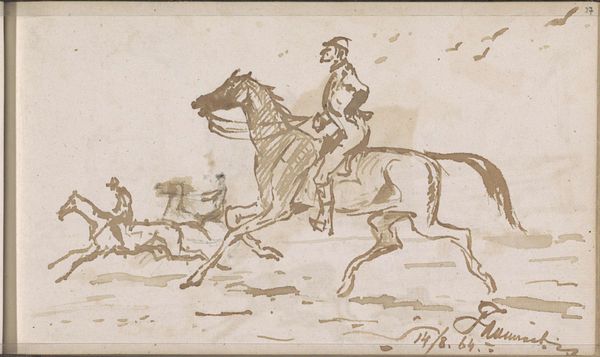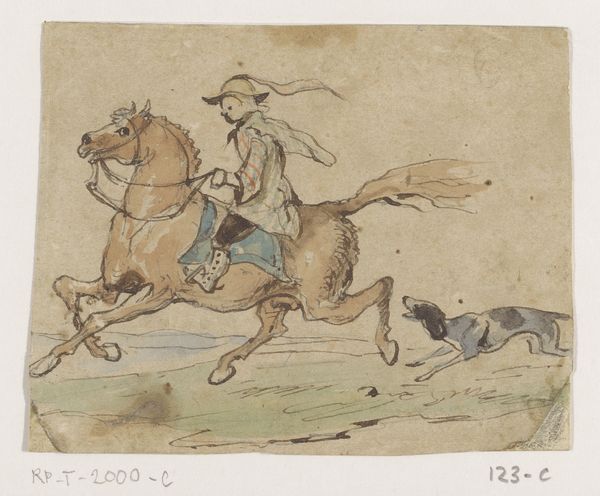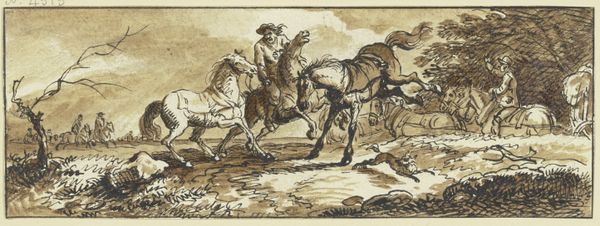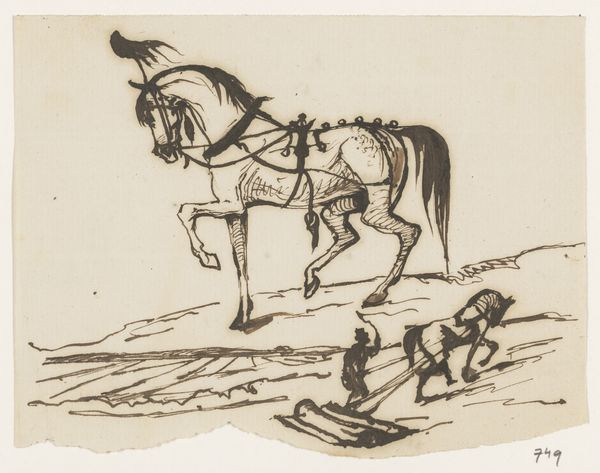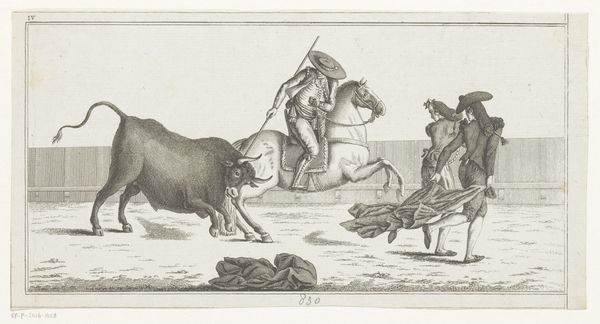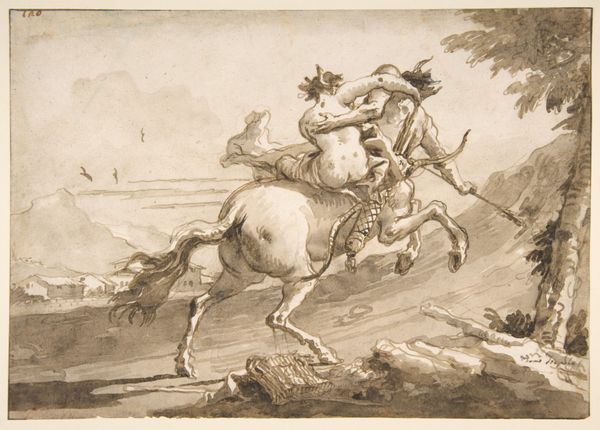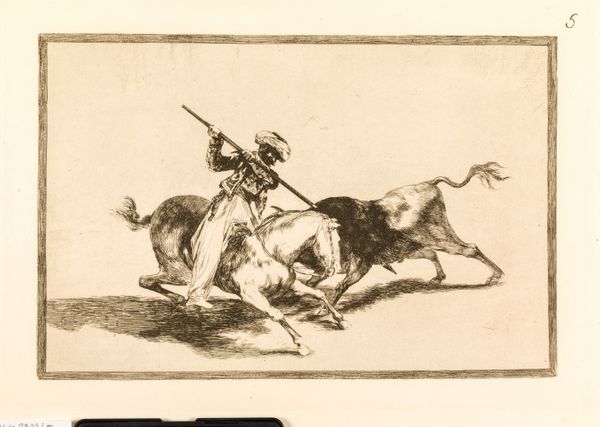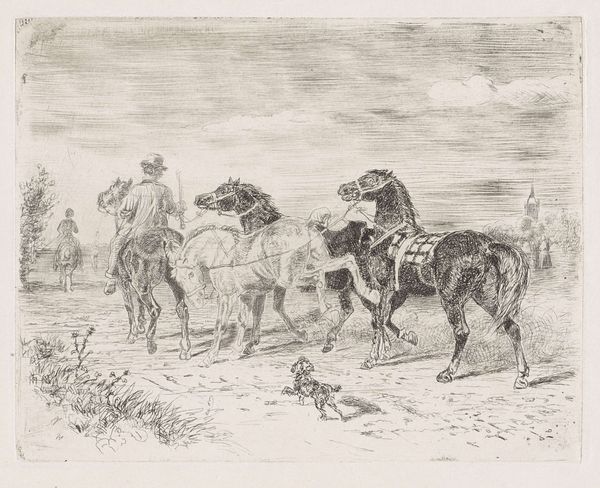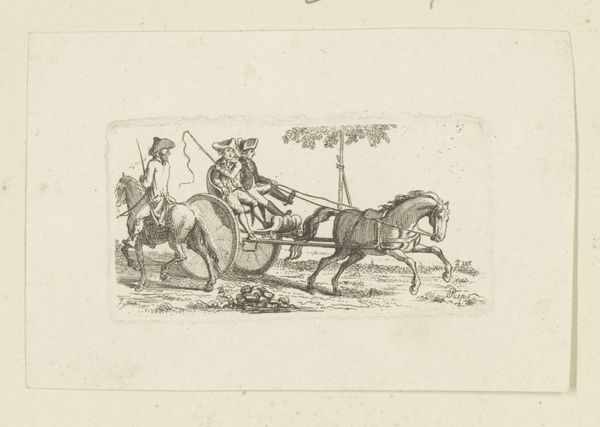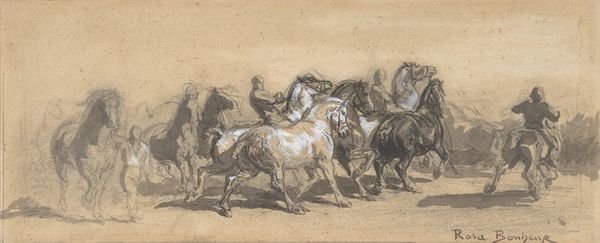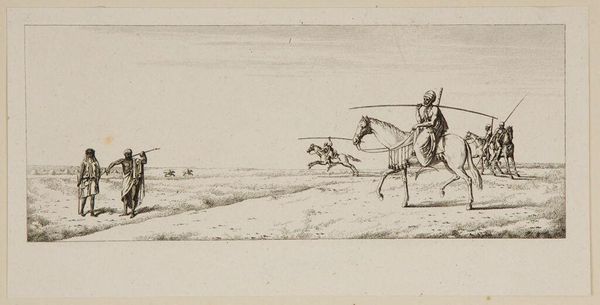
Copyright: Rijks Museum: Open Domain
Editor: So this is *Landschap met een ruiter en rennende honden*, or *Landscape with a Rider and Running Dogs*, by Johannes Tavenraat, made with watercolor sometime between 1864 and 1868. It has a sepia tone that lends a distinct feeling of looking at the past. What do you see in this piece, and how does it resonate with you? Curator: What strikes me is the depiction of man’s relationship to animals within a broader landscape, and how that mirrors power structures within society itself. We see the rider, clearly in control, directing the energy of the horse and hounds. Consider the historical context; hunting was often a preserve of the wealthy. Who had the freedom to roam and command these resources, animal and otherwise? Editor: That's a good point. It does make me wonder about the power dynamics represented. Is this merely a depiction of recreation, or is there a more profound comment on social hierarchy? Curator: I would argue that art of this period often naturalizes such hierarchies, presenting them as inherent aspects of life rather than constructed inequalities. This picturesque scene is perhaps more of a commentary on land ownership, privilege and the societal expectation for everyone to be within a certain order of social life. Can you identify other visual cues that reinforce this perspective? Editor: I suppose the way the rider is positioned, above everything, really cements that hierarchy. It also makes you wonder about those not included, right? The figures absent from this landscape. Curator: Precisely. The absences are often as telling as the presences. Who is excluded from this idyllic scene and what does their exclusion tell us about the artist's, and perhaps the viewer’s, social position? Editor: It's interesting to consider art not just for what it shows, but for what it omits. Thank you for this interpretation. Curator: And thank you for prompting such thoughtful questions. Analyzing art with a critical lens makes us interrogate societal norms and dominant narratives that are usually overlooked.
Comments
No comments
Be the first to comment and join the conversation on the ultimate creative platform.
